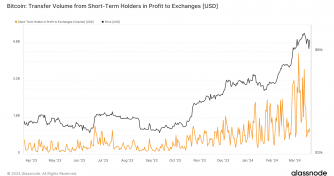Last month was the warmest January ever recorded globally, scientists say.
It follows the trend of 2023 – the warmest year since records began.
It also means the global mean temperature for the past twelve months is the highest on record and 1.52C above the 1850-1900 pre-industrial average.
More than 190 countries committed under the 2015 Paris Agreement to limiting global warming to “well below” a 2C rise compared to pre-industrial levels by the end of the century.
The countries also agreed to “pursue efforts” to keep warming within the safer limit of 1.5C, after which point climate impacts become even harder to adapt to.
Samantha Burgess, deputy director of the EU’s Copernicus Climate Change Service (CCCS) said: “2024 starts with another record-breaking month.
“Not only is it the warmest January on record but we have also just experienced a 12-month period of more than 1.5°C above the pre-industrial reference period.
“Rapid reductions in greenhouse gas emissions are the only way to stop global temperatures increasing.”
According to the CCCS, last month, the global average air surface was 0.7C warmer than the 1991-2020 average for January and 1.66C warmer than an estimate of the January average for 1850-1900.
January’s average was also 0.12C above the temperature of the previous warmest January – in 2020.
It means the last eight consecutive months have been the warmest on record for their respective months.
The figure was mostly driven up by well above average temperatures over eastern Canada, north-western Africa, the Middle East and central Asia, according to Copernicus.
However, there were also below average temperatures over western Canada, central US, and most of eastern Siberia.
Click to subscribe to ClimateCast with Tom Heap wherever you get your podcasts
Meanwhile, European temperatures varied in January 2024 from much below the 1991-2020 average over the Nordic countries, to much above average over the south of the continent.
Earlier this month, Spain’s environment ministry declared January as the country’s warmest since records began in 1961, with an average temperature of 8.4C – 0.4C above the previous record in 2016.
Be the first to get Breaking News
Install the Sky News app for free
Read more from Sky News:
World’s largest offshore wind developer cuts back production targets
Lab-grown meat could be about to take a small step closer to our plates
However, Nordic countries saw some of the coldest temperatures in decades.
Kvikkjokk, a town in Sweden, recorded a temperature of -43.6C on 3 January – the coldest January temperature recorded in Sweden in 25 years.
Last year saw a transition to a warming weather pattern called El Nino, when heat from the ocean, particularly the central-east equatorial Pacific, releases into the atmosphere.
Copernicus reported that El Nino had begun to weaken in the equatorial Pacific, but that marine air temperatures, in general, had remained at an unusually high level.
Meanwhile, Arctic sea ice extent – a measurement of the concentration of sea ice – was close to average, and the highest for January since 2009, while Antarctic sea ice extent was the sixth lowest for January, at 18% below average.








